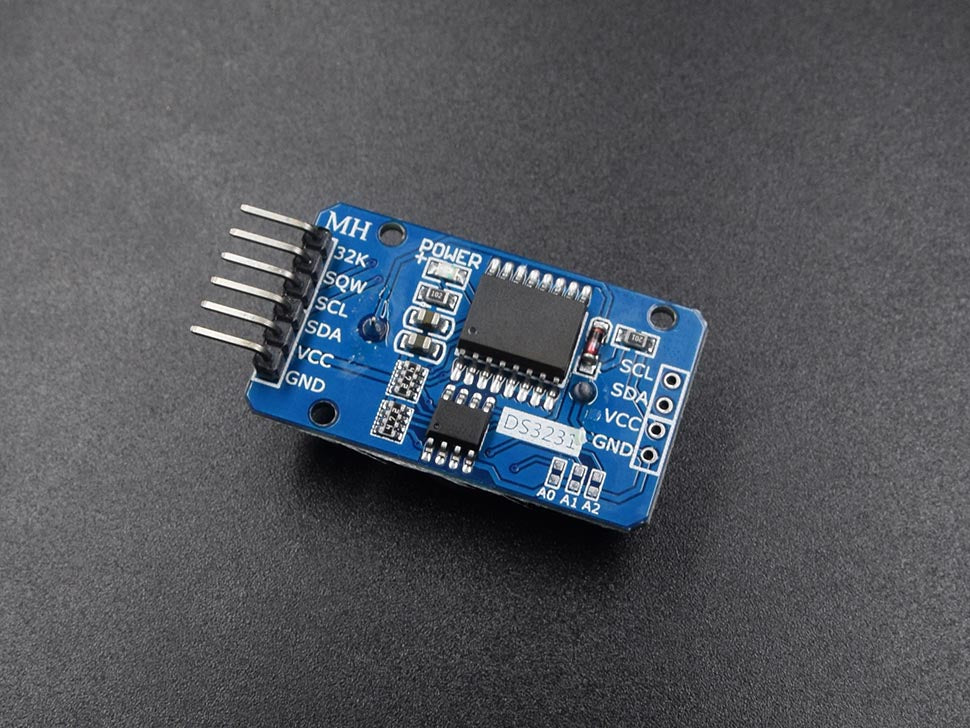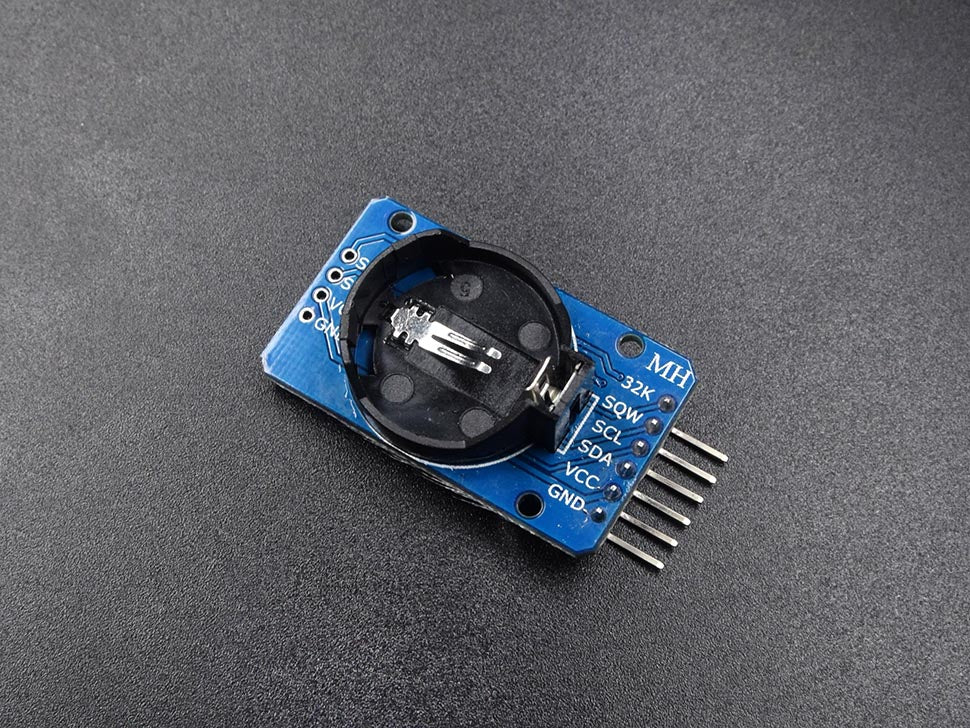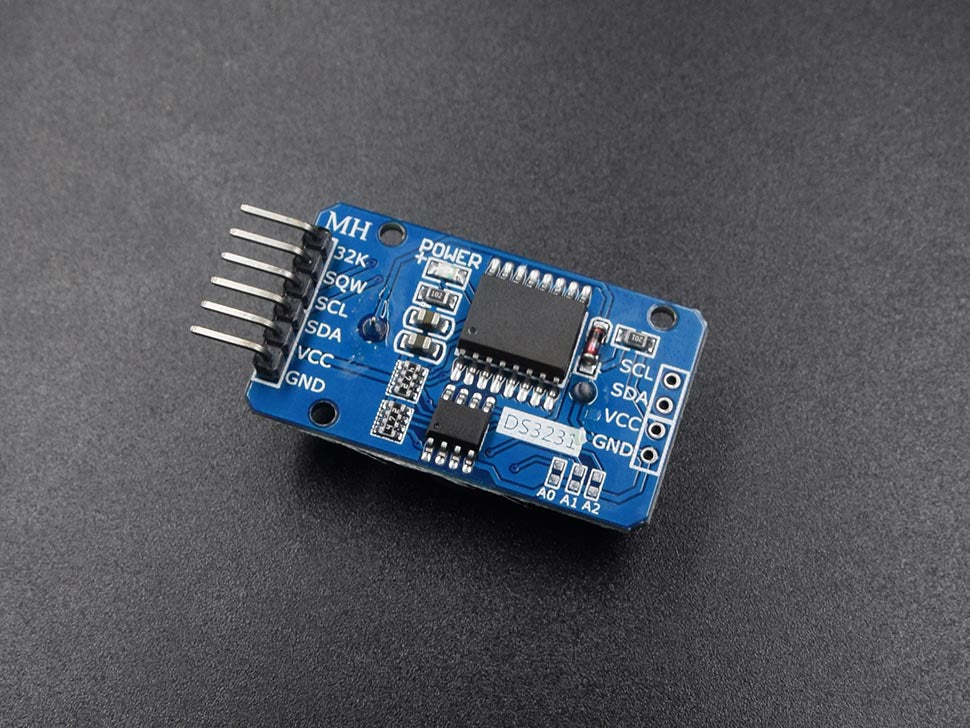RTC Real Time Clock and EEPROM DS3231 AT24C32 Module
RTC Real Time Clock and EEPROM DS3231 AT24C32 Module - DS3231 is a low-cost, extremely accurate I2C real-time clock (RTC), with an integrated temperature-compensated crystal oscillator (TCXO) and crystal. Compared to the DS1302 solution, the DS3231 has many advantages, it functions with a VCC ranging from 2.3V to 5.5V and has a battery backup. Unlike the DS1307, the DS3231 also has an integrated crystal (so no external crystal required), temperature sensor, 2 programmable time-of-day alarms, a 32.768 kHz output pin to ensure higher accuracy. Besides, there is also an EEPROM AT24C32 to supply you with 32K EEPROM to store your data, it is the best choice for your application that needs recoding time, a built battery holder makes this module suitable. It is a good substitution for the data logging shield, with even higher time precision.
Features
- Size: 38mm (length) * 22mm (W) * 14mm (height)
- Weight: 8g
- Operating voltage :3.3 - 5 .5 V
- Clock chip: high-precision clock chip DS3231
- Clock Accuracy :0-40 ℃ range, the accuracy 2ppm, the error was about 1 minute
- Calendar alarm clock with two
- Programmable square-wave output
- Real-time clock generator seconds, minutes, hours, day, date, month, and year timing and provide valid until the year 2100 leap year compensation
- The chip temperature sensor comes with an accuracy of 3 ℃
- Memory chips: AT24C32 (storage capacity 32K)
- IIC bus interface, the maximum transmission speed of 400KHz (working voltage of 5V)
- Can be cascaded with other IIC devices, 24C32 addresses can be shorted A0/A1/A2 modify default address is 0x57
RTC Real Time Clock and EEPROM DS3231 AT24C32 Module – Description
Key Advantages/Merits of Using Real-Time Clocks
Versatility
Requires lower supply current
Easier software integration
Simpler oscillator circuit
Setting up Time on a DS3231/DS3107/DS1337
- S3231 Real Time Clock (or DS3107/DS1337)
- Arduino UNO
- 4 Male to Female Breadboard Cables and a Coin Cell Battery
Connect RTC to Arduino
- VCC ->Arduino 5V
- GND ->Arduino GND
- SDA ->Arduino A4
- SCL ->Arduino A5
Download the Arduino Library and Run the SetTime Sketch
- Visit http://www.pjrc.com/teensy/td libs DS1307RTC.html to download and install the DS1307RTC Library. Read these instructions if you need help installing an Arduino library.
- Open the Arduino IDE, connect your Arduino to your computer, and launch the SetTime sketch, which is located under: File->Examples->DS1307RTC->SetTime.
- As soon as you download the sketch to the Arduino, make sure your Arduino is linked to a computer.
- Make sure the baud rate is set to 9600 when you open the Serial Window. You should receive a success message similar to the one in the final image above if all goes according to plan.
- Now that you're prepared, use the right time in your upcoming initiatives. It ought to automatically use the RTC's date and time upon reboot. The registers RTC array and the accompanying variables are where the getTime() function stores the obtained time and date. This procedure modifies all time- and date-related API variables: RTC
- Start the Pi without any internet connection to verify that it is functioning properly (unplugging Ethernet and disabling WiFi). It's important to set the time properly. Now that it is configured correctly, it is operational.
Download& External Link
RTC Real Time Clock and EEPROM DS3231 AT24C32 Module
RTC Real Time Clock and EEPROM DS3231 AT24C32 Module
Out of stock
Product Code
SKU:AB603
Couldn't load pickup availability




